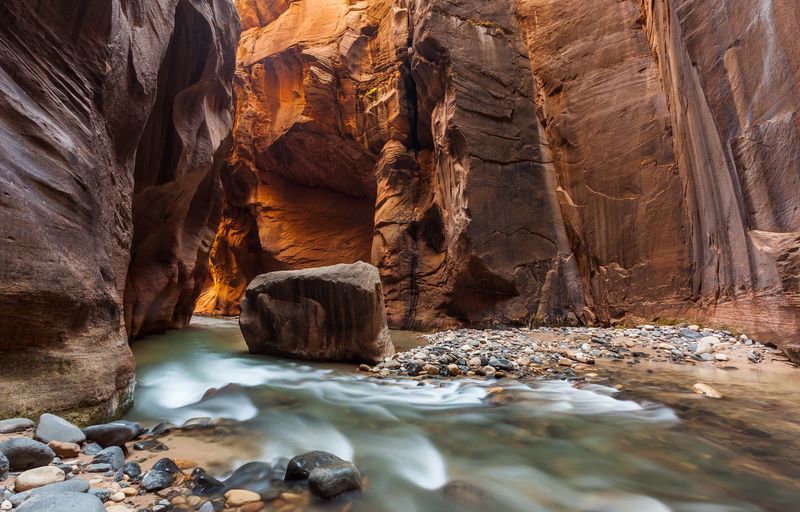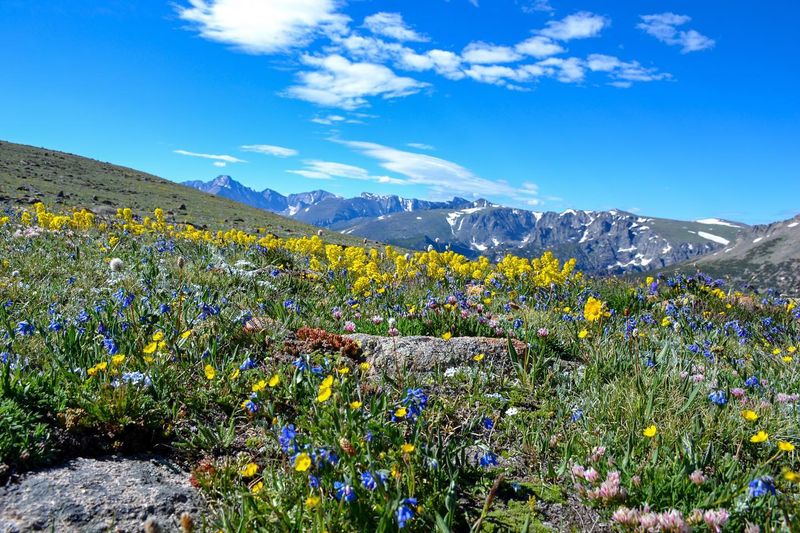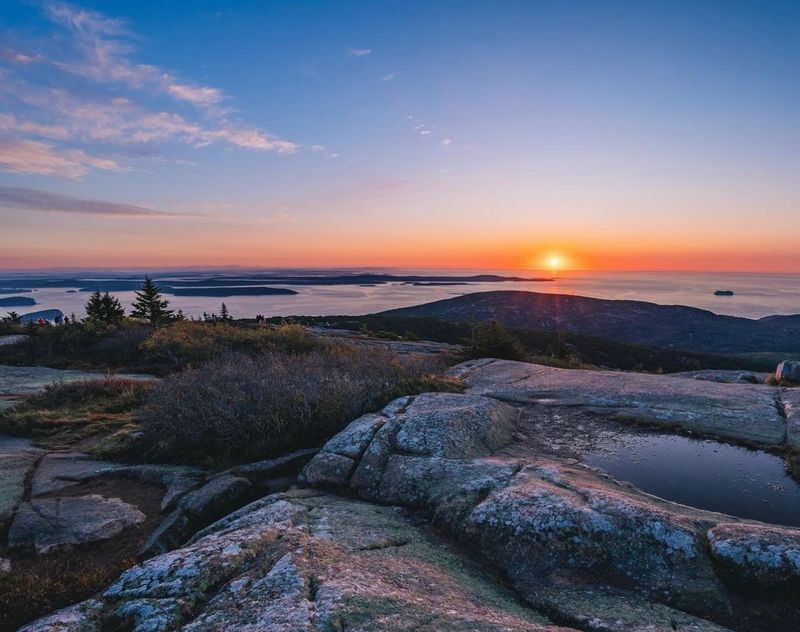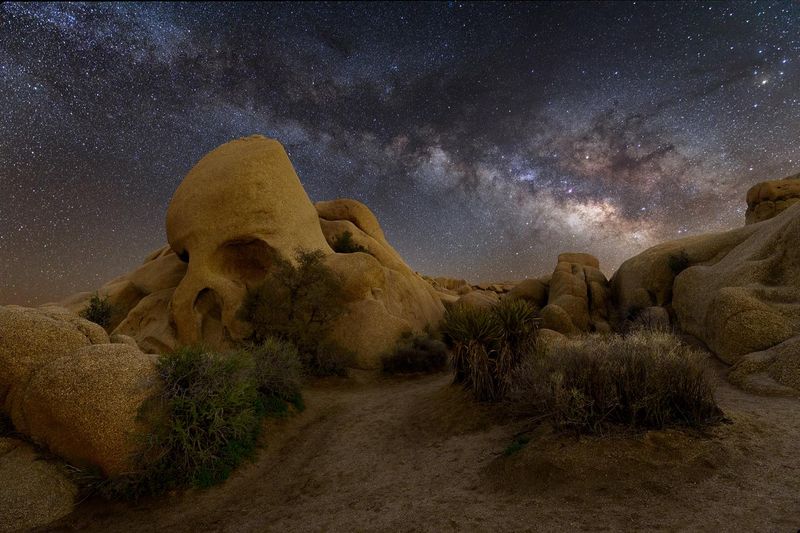11 Best U.S. National Parks To Visit In The Summer

There’s no better time than summer to hit the trails, breathe in mountain air, and lose track of time under an open sky. National parks shine this time of year – wildlife is active, wildflowers are in full bloom, and those snow-blocked paths finally clear.
I’ve roamed forests, deserts, and alpine lakes to find the parks that truly come alive in the warmer months. If you’re chasing epic views and memory-making hikes, this bucket list is for you. Ready to find your perfect summer escape?
1. Yellowstone: Where Geysers Meet Wildlife

Summer reveals Yellowstone’s full glory when bison roam freely across vast meadows and Old Faithful performs on schedule. The park’s 2.2 million acres become fully accessible, with previously snow-blocked roads opening to reveal hidden waterfalls and vibrant hot springs.
Morning wildlife viewing offers your best chance to spot grizzlies, wolves, and elk. I recommend planning your visit for June to avoid peak July crowds while still enjoying warm days and cool evenings perfect for stargazing.
2. Yosemite: Valley of Granite Wonders

Half Dome stands majestically against azure skies while waterfalls cascade down sheer granite cliffs during Yosemite’s spectacular summer season. Though crowded, the valley’s beauty is worth navigating the throngs of visitors who come to witness this Sierra Nevada masterpiece.
Early mornings offer peaceful moments before day-trippers arrive. My favorite summer activity involves hiking to Glacier Point for sunset views that transform the entire valley into a golden paradise as alpenglow paints El Capitan and Half Dome in warm hues.
3. Grand Canyon: Desert Majesty at Sunrise

Watching dawn break over this massive chasm ranks among life’s most awe-inspiring experiences. The Colorado River glints far below while rock layers reveal Earth’s history in bands of red, orange, and purple stretching to the horizon.
Summer brings heat, especially at lower elevations, so I always start rim hikes before sunrise. The South Rim’s shuttle system makes exploration easy, though venturing to the less-visited North Rim rewards you with cooler temperatures and smaller crowds amid ponderosa pine forests.
4. Zion: Red Rock Canyons and Emerald Pools

Walking through the Virgin River in The Narrows feels like entering nature’s cathedral, with towering walls rising hundreds of feet on either side while cool water swirls around your ankles. This refreshing adventure provides perfect relief from summer heat.
Angels Landing delivers heart-pounding thrills for those unafraid of heights. The chain-assisted climb leads to panoramic views that stretch across Zion’s colorful landscape. Evening brings relief from daytime temperatures, making it ideal for wildlife spotting as mule deer emerge from shady retreats.
5. Rocky Mountain: Alpine Meadows in Bloom

Wildflower explosions transform high meadows into natural gardens during July and August. Indian paintbrush, columbine, and alpine sunflowers create a patchwork of colors against dramatic mountain backdrops that reach over 14,000 feet.
Trail Ridge Road finally becomes snow-free, allowing access to spectacular alpine tundra where elk and bighorn sheep graze. My perfect day includes an early hike around Bear Lake followed by a picnic at Rainbow Curve overlook, watching afternoon thunderclouds build over jagged peaks before clearing for star-filled evenings.
6. Glacier: Montana’s Crown Jewel

Hidden Lake Trail offers jaw-dropping vistas across an alpine landscape where mountain goats perch on precarious ledges and beargrass blooms in fluffy white clusters. Summer provides the only reliable window to drive the engineering marvel of Going-to-the-Sun Road, which crosses the Continental Divide at Logan Pass.
Actual glaciers continue their retreat due to climate change, making this park’s name increasingly poignant. I always recommend paddling across crystal-clear Lake McDonald in a kayak, watching for eagles overhead while surrounded by mountains that seem to rise directly from the water’s edge.
7. Acadia: Where Mountains Meet the Atlantic

Sunrise from Cadillac Mountain gives you first light in the continental United States, painting the Atlantic and scattered islands in golden hues. Maine’s rocky coastline provides dramatic contrast to forested mountains rising directly from the sea.
Cooling ocean breezes make summer hiking comfortable compared to inland parks. Thunder Hole demonstrates nature’s power as incoming waves compress air in a narrow inlet, creating explosive sounds that echo across the shoreline. After exploring, I love enjoying fresh lobster in nearby Bar Harbor—the perfect end to an Acadia adventure.
8. Olympic: Three Ecosystems in One Park

Few places let you hike through temperate rainforest, alpine meadows, and wild beaches all in a single day. Massive Sitka spruce trees draped in moss create an otherworldly atmosphere in the Hoh Rainforest, where Roosevelt elk move silently between ancient giants.
Summer fog often shrouds coastal areas while mountain meadows bask in sunshine. This unique climate diversity makes Olympic a fascinating summer destination. Hurricane Ridge offers sweeping views across the park’s interior mountains, where snow lingers into August and black bears forage among subalpine wildflowers.
9. Great Smoky Mountains: Appalachian Wilderness

Fireflies perform synchronized light displays in early summer, creating magical evenings that draw visitors from around the world. These mountains hold more tree species than all of northern Europe, creating a biodiversity hotspot where black bears thrive among dense forests.
Morning fog gives these mountains their name, rolling through valleys in ethereal waves. Clingmans Dome observation tower provides spectacular views across rippling mountain ridges that fade to blue in the distance. Despite being America’s most visited national park, numerous trails let you escape crowds and discover hidden waterfalls perfect for summer cooling.
10. Bryce Canyon: Otherworldly Hoodoo Formations

Sunrise transforms Bryce’s famous hoodoos into a glowing orange wonderland that seems plucked from science fiction. These delicate spires, formed by erosion, create an amphitheater of stone that changes color throughout the day.
Summer temperatures remain relatively comfortable due to the park’s 8,000-foot elevation. Hiking down among the hoodoos on Navajo Loop Trail gives you a completely different perspective than rim viewpoints. Night brings spectacular stargazing opportunities in some of America’s darkest skies, where the Milky Way stretches overhead in breathtaking clarity.
11. Joshua Tree: Desert Magic Under Starry Skies

Bizarre Joshua trees stretch their spiky arms across a landscape where massive granite boulders create natural playgrounds for climbers and explorers. Despite desert stereotypes, summer brings spectacular monsoon storms that briefly transform the landscape with dramatic clouds and lightning displays.
Early mornings and evenings offer comfortable temperatures for hiking through otherworldly terrain. Skull Rock and Cholla Cactus Garden showcase the park’s diverse desert environments. After sunset, the real magic begins as the Milky Way emerges in stunning detail above this International Dark Sky Park.
